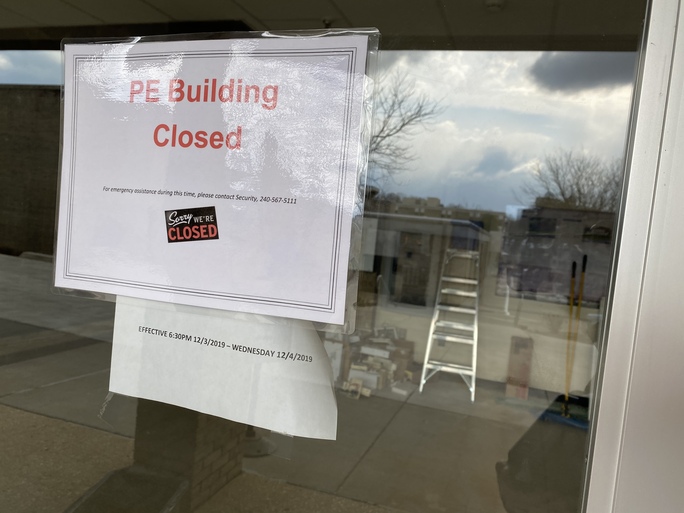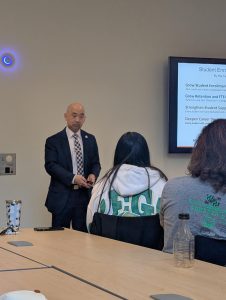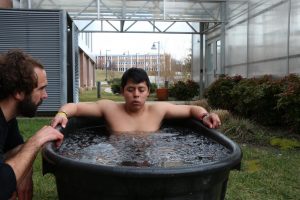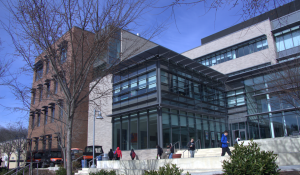P.E. Building Set To Reopen Following Months of Closure
Asbestos has been removed from the P.E. building after it was discovered in Fall 2019
Sign indicating closure of P.E. Building.
March 9, 2020
The P.E. Building is reopening following the successful removal of asbestos from ceiling tiles, floor tiles and plumbing joints.
For several weeks on the MC website, a blue banner on the top of the page indicated the closure of the P.E. Building with a list of relocated classes. That banner is no longer on the site.
After successful asbestos removal procedures, the P.E. Building is set to reopen completely by the end of March.
While the building was shuttered, classes were moved, offices and events were relocated, and specialized training equipment was temporarily out of reach.
Dr. Albert J. Baca, professor of health sciences at MC, is one of many faculty and staff whose semester was thrown into flux by the loss of the building and facilities. According to Dr. Baca, faculty in the Health Science Department were largely able to tailor their courses around not having access to the building, however, moving classrooms and offices mid-semester will be disruptive.
When moving back into the building, Dr. Baca and his staff hope to avoid any transitional headaches. “It’s not easy, perfect, or ideal,” said Baca, “but we are working very hard to ensure the building is safe for faculty and students alike.” He stressed that air quality and the safety of college employees and students are the priority.
Asbestos is a building material that was banned in the US in 1977. According to OSHA.gov, the danger comes when particulate fibers are inhaled or ingested. The fibers can become embedded in the soft tissue of the lungs and esophagus and may cause ailments such as asbestosis, mesothelioma, and lung and gastrointestinal cancer.
The process of making the space safe again, or abatement, began on January 28 under guidance from the Maryland Occupational Health and Safety and Maryland Department of the Environment.
The process includes replacing all ceiling tiles, any broken floor tiles, and any plumbing connections that may contain the harmful material. Abatement is concluded with a series of tests determining the presence of asbestos particulate and mold by a third-party, as well as industrial cleaning of all affected spaces.
A full report on the asbestos program at MC can be found on the Office of Facilities’ Occupational and Environmental page on the schools website.
More information on asbestos can be found on the OSHA Website.












